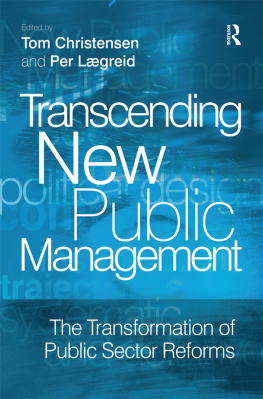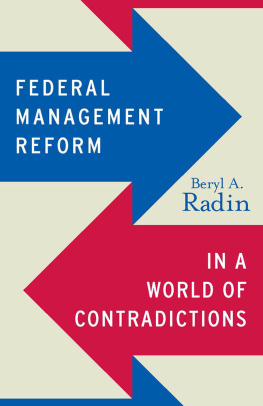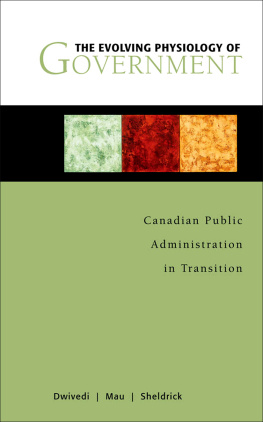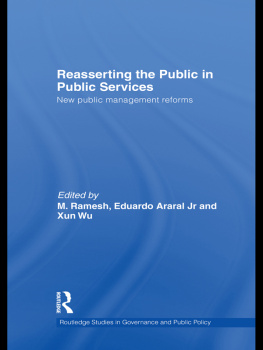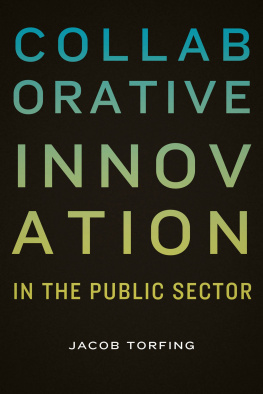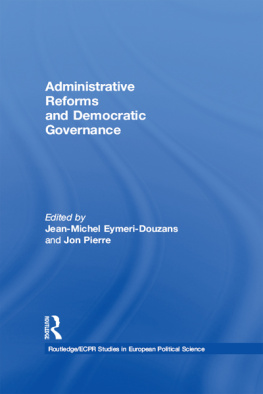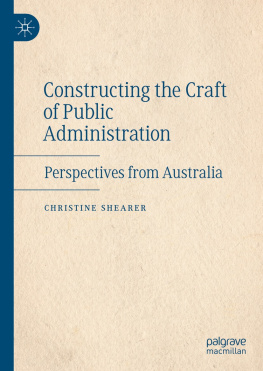Transcending New Public Management
First published 2007 by Ashgate Publishing
Published 2016 by Routledge
2 Park Square, Milton Park, Abingdon, Oxon OX14 4RN
711 Third Avenue, New York, NY 10017, USA
Routledge is an imprint of the Taylor & Francis Group, an informa business
Copyright Tom Christensen and Per Lgreid 2007
Tom Christensen and Per Lgreid have asserted their moral right under the Copyright, Designs and Patents Act, 1988, to be identified as the editors of this work.
All rights reserved. No part of this book may be reprinted or reproduced or utilised in any form or by any electronic, mechanical, or other means, now known or hereafter invented, including photocopying and recording, or in any information storage or retrieval system, without permission in writing from the publishers.
Notice:
Product or corporate names may be trademarks or registered trademarks, and are used only for identification and explanation without intent to infringe.
British Library Cataloguing in Publication Data
Transcending new public management : the transformation of
public sector reforms
1. Public administration 2. Civil service reform 3. Public
administration - Case studies 4. Civil service reform -
Case studies
I. Christensen, Tom, 1949-II. Lgreid, Per
Library of Congress Cataloging-in-Publication Data
Transcending new public management : the transformation of public sector reforms /
edited by Tom Christensen and Per Lgreid.
p. cm.
Includes index.
ISBN 978-0-7546-7071-1
ISBN 978-0-7546-7117-6
1. Public administration. 2. Public administration--Cases studies. I. Christensen,
Tom, 1949-II. Lgreid, Per.
JF1351.T73 2007
351--dc22
2006100187
ISBN 13: 978-0-7546-7071-1 (hbk)
ISBN 13: 978-0-7546-7117-6 (pbk)
Contents
Maria Blomgren , Researcher, Uppsala University, Sweden
Tom Christensen , Professor, University of Oslo, Norway
Anders Forssell , Associate Professor, Uppsala University, Sweden
Robert Gregory , Associate Professor, Victoria University, Wellington, New Zealand
Carsten Greve , Professor, Copenhagen Business School, Denmark
John Halligan , Professor, University of Canberra, Australia
Graeme Hodge , Professor, Monash University, Australia
Amund Lie , PhD student, University of Oslo, Norway
Per Lgreid, Professor, University of Bergen, Norway
Martin Marcussen , Associate Professor, University of Copenhagen, Denmark
Lars Norn , Associate Professor, Goteborg University, Sweden
Richard Norman , Associate Professor, Victoria University, Wellington, New Zealand
Martin Painter , Professor, City University, Hong Kong
Paul G. Roness , Professor, University of Bergen, Norway
Kerstin Sahlin , Professor, Uppsala University, Sweden
This book contains studies focusing on post-New Public Management (NPM) reforms by contrasting them with the NPM-based public-sector reforms that took place during the last two decades of the twentieth century. Its empirical focus is on Australia, Denmark, Norway, New Zealand and Sweden. Our theoretical approach is a transformative one, embracing political design, culturalinstitutional trajectories and external pressure to understand the processes and effects of the reforms.
A main aim of our study is to examine what has happened over time. We look beyond NPM and a central question being asked is whether NPM is finished. Our argument is that NPM is by no means over. It has, however, been challenged. New types of reforms have been added, and there have been some reversals, especially when it comes to the disaggregation components of NPM. We also see a reassertion of the centre, strengthening of central policy capacity and whole-of-government initiatives to enhance horizontal co-ordination.
There are a number of individuals and organizations to whom we owe our thanks. An acknowledgement goes to our network of colleagues and friends who share an interest in institutional change, comparative public administration and public-sector reform.
This book is a follow-up to our 2001 volume (Tom Christensen and Per Lgreid (eds), New Public Management. The Transformation of Ideas and Practice , Aldershot: Ashgate). Special thanks go to our hosts at the Centre for Research in Public Sector Management at the University of Canberra and at the School of Business and Public Management at Victoria University of Wellington.
Thanks are also due to Hilde Kjerland for technical assistance in supervising the preparation of the manuscripts and to Melanie Newton for very competent language assistance.
We are also grateful for generous financial and administrative support from the Norwegian Research Council, especially the research project Regulation, Control, and Auditing. We also thank the Scandinavian Consortium of Organizational Research at Stanford University, the Rokkan Centre at the University of Bergen, the Department of Administration and Organizational Theory at the University of Bergen and the Department of Political Science at the University of Oslo.
Oslo/Bergen, November 2006
Tom Christensen and Per Lgreid
Chapter 1
Introduction Theoretical Approach and Research Questions
Tom Christensen and Per Lgreid
Introduction
This book studies post-New Public Management (NPM) reforms by contrasting them with the NPM-based public-sector reforms that took place in the 1980s and 1990s. Its empirical focus is on Sweden, Norway, Denmark, Australia and New Zealand. We apply a transformative theoretical approach by focusing on political design, culturalinstitutional trajectories and external pressure to understand the processes and effects of the reforms (Christensen and Lgreid 2001a). This approach allows us to make a systematic and definitive assessment of NPM and of the experience and results of post-NPM reforms.
A comparison of NPM and post-NPM reforms and an analysis of the dynamics between the reform waves raises several issues:
- Global trends diffusion and imitation, and the mechanisms involved
- Changes and variety in reform styles and patterns
- Combinations and re-combinations of both ideas and practice in different countries
- Convergence and divergence similarities and differences in ideas and practice
- The effects of local institutional, political and other factors on the adoption, implementation and outcome of reforms
- Hybrids and transplants in both processes and outcomes
- Paradoxes and unintended consequences of reforms
- Revisions and reversals of specific NPM reforms
- The influence of changes of government
A main aim of our study is to examine what has happened over time. The need to look beyond NPM what came to be termed transcending New Public Management was identified back in 1998 (Minogue, Polidano and Hulme 1998). The central question being asked is whether NPM is finished (Pollitt 2003b). While some, citing the crises that NPM has experienced, proclaim that it is indeed dead (Dunleavy et al. 2006), we would tend to support Pollitts view (2003a) that NPM is by no means over. It has, however, been challenged: new types of reforms have been added to those already in place, and there have been some reversals, especially when it comes to the disaggregation components of NPM (Dunleavy et al. 2006).
The reforms that were undertaken under the label NPM represented major changes compared with the old public administration, and they paved the way for further reforms and transformations in the post-NPM era. Market solutions and market ideology now seem to have become more or less institutionalized within the public sector, albeit without erasing major Weberian features of the old system (see ), and a certain amount of re-regulation has taken place in recent years. The trend towards single-purpose organizations, as opposed to a more integrated system, was another feature of the first generation of NPM reforms that became stronger over the years, but recent reforms have modified this by introducing more co-ordination and collaboration across and within politicaladministrative systems (Christensen and Lgreid 2006c). A third element of NPM was structural devolution, which resulted in the autonomization and agencification of public-sector organizations. However, in recent years this has been countered by a reassertion of the centre and a strengthening of central state capacity (Christensen and Lgreid 2006a).

